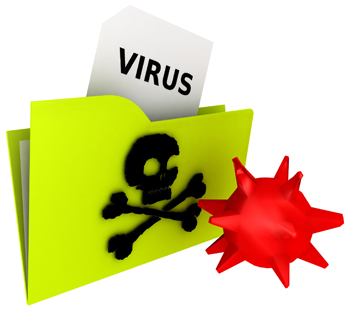How to Avoid Getting a Virus from an Email Attachment

Email attachment is one of the most commonly-used mediums by virus to spread itself across the Internet. Thousands of computers fall victim to this mode of transmission every day, as not everyone is expecting a malicious program inside their email account. Even users who exercise a great deal of caution, sometimes fail to protect their systems from viruses inside email attachments due to the slyness of the sender or developer of the virus.
Internet users who frequently send and receive emails with attachments can still protect themselves and the people they correspond to by taking a few extra precautions and keeping certain things in mind.
Things Required:
– Computer with Internet Anti-virus software
Instructions
-
1
The first thing that you need to do is to download an anti-virus software from a reputable source. Make sure your computer is connected to the Internet. Launch your Web browser, go to the Google search engine home page, write “download antivirus software” in the search field and press the search button.
Choose from the list of results wisely. There are many vendors present on the Internet, each claiming to offer a product that has great virus-removing capabilities, but you will need to avoid getting fooled by their advertising and make a choice that you will not regret later on. There are numerous cases of people downloading a software that was being projected as an anti-virus software, but was in actual a Trojan. Some reputable vendors include Norton, AVG, Kaspersky and McAfee. -
2
After you have downloaded the anti-virus software from the Internet, install it and update the virus definitions to enhance the protection provided by it. Remember to set the update option to automatic.
-
3
Some email clients automatically open attachments, saving user the trouble of clicking on it himself/herself. However, you may want to disable this option from the settings section in your email account. It is best to open the attachments manually.
-
4
Always remember to thoroughly examine the attachments and the sender who has sent them. While you may already know that it is not at all safe to open attachments from unknown senders, it is also important to exercise caution while opening attachments received from senders that you know very well. Do not open them unless you were expecting an attachment from the sender. The sender may have mentioned the attachment in the email message and explained what it contains. If nothing is mentioned, verify it from the sender by sending him/her an email or calling them up.
-
5
Always remember to scan attachments that come with the email before opening them. Many email clients have built-in scanners, but you cannot rely on them alone. Use the anti-virus that you downloaded in the first step to check the attachments for virus.
-
6
After you have opened the attachment, run a full scan of your system. Some viruses can sneak past the initial scan and make their way onto the system. Rather than waiting for the virus to make its presence felt, adopt a proactive approach and search for them yourself in order to remove them before they take a toll on your computer’s performance and affect your sensitive data.







